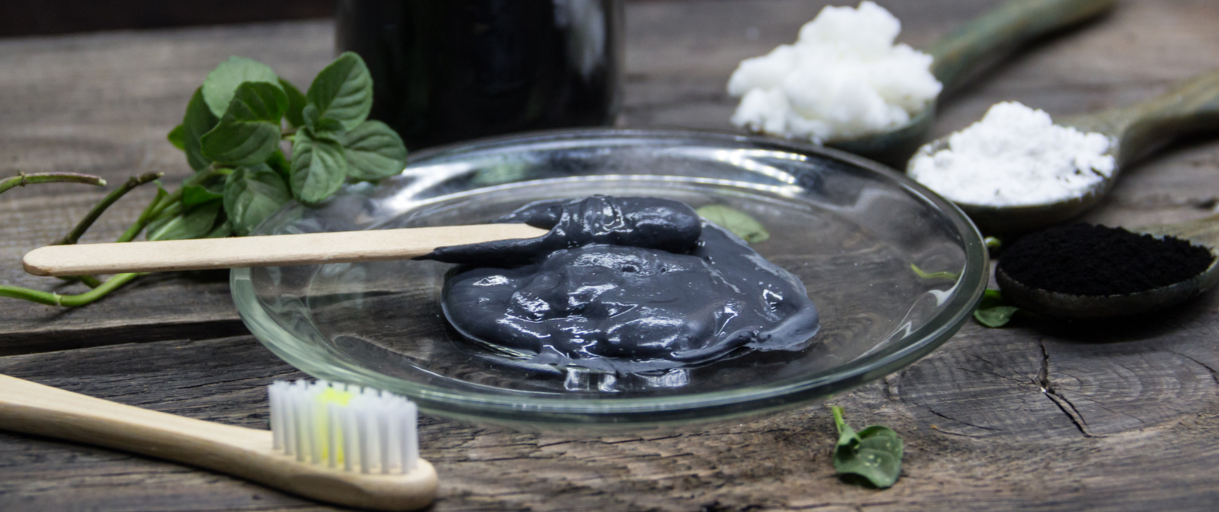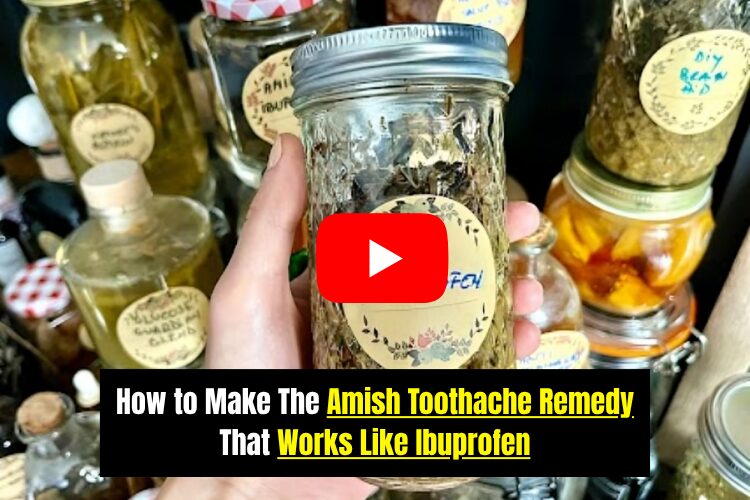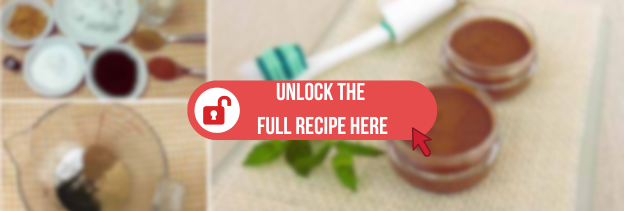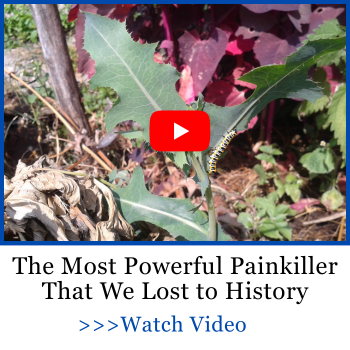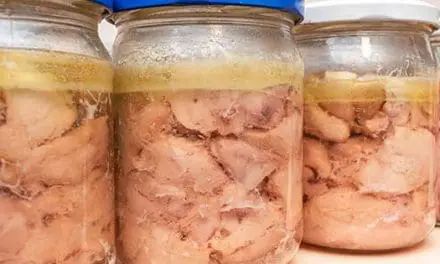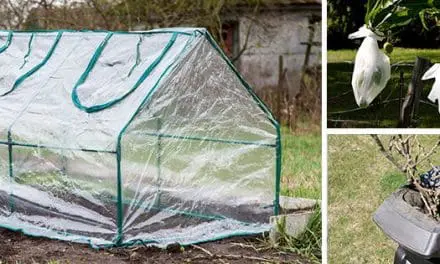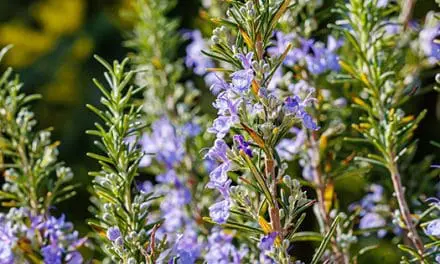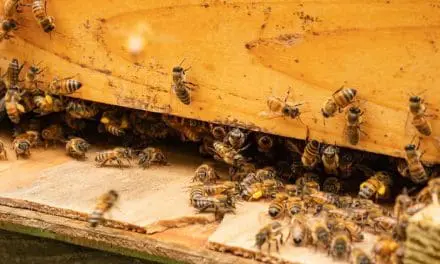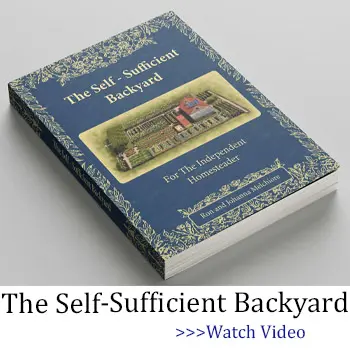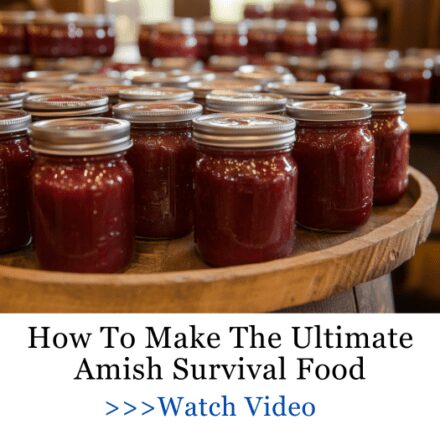Take a look at most toothpaste labels and you’ll find ingredients like triclosan, artificial dyes, and foaming agents — chemicals linked to gum irritation, hormone disruption, and many other health concerns. Why are we brushing these into our mouths every day?
The truth is, you don’t need any of them. Long before large commercial conglomerates got into the business of manufacturing toothpaste, our pioneer ancestors found natural solutions to something as basic as brushing their teeth. They used various combinations of natural abrasives, herbs and other ingredients to make a paste that not only kept their teeth clean, but actually killed germs to prevent tooth decay.
For centuries, people kept their teeth clean with these simple, natural ingredients — and some of the best might already be growing in your backyard. In this article, you’ll find easy recipes for natural toothpaste made from plants that are safe, effective, and surprisingly close at hand.
Common Toothpaste Ingredients
Here are some of the basic ingredients that define a toothpaste, and then we’ll list some of the natural alternatives.
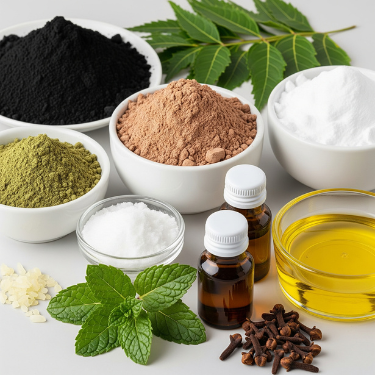
✅Abrasives
Abrasives in toothpaste do the dirty work of removing particles, film and other stuff that sticks to our teeth. These need to be mild scrubbing agents and some natural alternatives include activated charcoal powder, bentonite clay (In the cosmetic industry, bentonite is often used in face masks and other skincare products due to its ability to absorb oils and impurities from the skin. It is also used in toothpaste as a natural polishing agent), baking soda, and neem powder. It should be noted that bentonite clay is not easy to identify and it probably isn’t in your backyard. But you can buy it online. The same goes for neem powder. Neem trees grow in tropical climates, but we’ll look at formulas that don’t rely on those somewhat exotic ingredients.
✅Binders/Thickeners
You need the toothpaste to stick to the brush to some degree, so natural binders and thickeners are an important ingredient. These include coconut oil, peppermint oil, or clove oil and baking soda. Quite often the abrasive will add some body and act as a binder as well, but the oil option gives your natural toothpaste the texture you might expect from a toothpaste.
✅Detergents
This isn’t about soap, it’s about ingredients that actively cleanse the teeth. Natural toothpaste cleansers include neem powder or baking soda.
✅Natural Sweeteners
This isn’t about sugar. That would be counterproductive for dental hygiene. But many herbs can add a natural sweetness and breath freshening characteristics. These include Stevia, Licorice root and Sweet Basil.
✅Flavoring agents
If it tastes bad, it’s hard to use, especially for kids. Here are some natural flavoring agents that you can add to your homemade toothpaste: spearmint leaves, peppermint leaves, lemon balm leaves, clove oil, lavender flowers. The good news is that they also have antiseptic properties.
✅Oral Antiseptics
Germs lead to tooth decay and oral antiseptics kill the germs. Natural alternatives include ginger, calendula flowers, and peppermint, which does double duty as both an oral antiseptic and flavoring agent.
➡️Toothache Relief
A sudden toothache can quickly turn from a minor annoyance into unbearable pain, often signaling an underlying infection or serious dental issue that shouldn’t be ignored. The longer you wait, the higher the risk of complications. What starts as a dull ache can escalate to intense throbbing, swelling, fever, or even an abscess that may require urgent medical attention. Not everyone has immediate access to a dentist, and sometimes the pain can strike at the most inconvenient times. When that happens, having a fast-acting, natural way to ease the pain isn’t just a convenience—it can be essential to prevent needless suffering and keep the situation from spirraling out of control.
👉🏼For toothaches that toothpaste alone can’t soothe, discover the powerful, natural Amish Ibuprofen remedy trusted for generations. It’s a simple, effective way to ease pain without chemicals — and it pairs perfectly with your homemade oral care routine.
That pretty much defines our list of basic ingredients. What we are not going to add are the humectant chemicals to allow for long-term storage of commercial toothpaste on the store shelves and in your medicine cabinet; fluoride because many people try to avoid it, preservatives, colorants, and some other chemicals like potassium nitrate and zinc citrate. The idea is to create an effective natural toothpaste that keeps teeth white, kills germs and leaves your breath fresh without the chemicals found in store-bought toothpaste. With that in mind, let’s take a look at some basic recipes.
Herbal Toothpaste Recipe #1
This is as simple as it gets and for the most part uses those backyard ingredients we promised although it needs a little help from baking soda which it easy to buy and usually cheap. Here’s the formula:
Ingredients: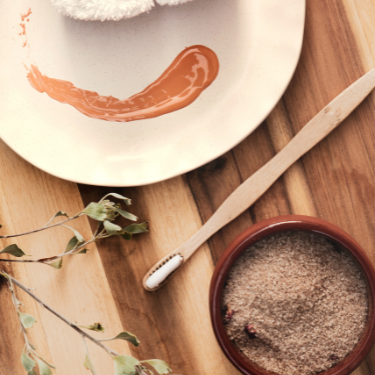
¼ teaspoon of ground peppermint leaves
½ teaspoon of ground stevia leaves
½ teaspoon of fine sea salt
2/3 cup of baking soda
1 teaspoon of arrowroot powder
Enough cold water to make a paste from the above ingredients
Directions:
- Dry the leaves from a peppermint plant and stevia plant. Start with 20 leaves from each. You can dry them in the sun; in a hanging basket or in a food dehydrator.
- When the leaves are dry, grind them either in a food processor or with a mortar and pestle.
- Measure out the dry ingredients and combine and mix all of the dry ingredients in a bowl.
- Slowly add the water stirring constantly. You want a thick paste.
- Dip your toothbrush into the paste and brush away.
- You can store your leftover natural toothpaste in a small plastic bowl with a lid or small mason jar. Refrigerate if you want but it should keep just fine on the bathroom sink for 2 weeks.
👉 If you want a faster, more consistent way to dehydrate herbs, my go-to choice is the Magic Mill Food Dehydrator Machine. It’s simple to use, with stackable stainless steel trays that are easy to clean and durable. The adjustable timer and temperature control let you dry herbs, fruits, or even jerky just the way you want without worrying about over- or under-drying. I’ve found it especially handy for peppermint, lemon balm, and other delicate leaves — it gives even results and saves time compared to air-drying.
Herbal Toothpaste Recipe #2
This natural toothpaste formula gets a little more ambitious, but we’re still trying to stick to as many homegrown ingredients as possible.
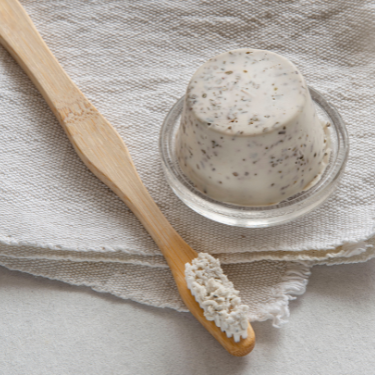
Ingredients:
½ teaspoon of peppermint powder
½ teaspoon of stevia powder
4 tablespoons of baking soda
1 tablespoon of activated charcoal
½ cup of solidified coconut oil
Directions:
- Follow the process described above to dry and pulverize the peppermint and stevia leaves to a powder.
- Combine all of the dry ingredients in a bowl and blend together.
- In a pan, warm the coconut oil briefly on the stove until softened. It might melt a little but get it off the heat to keep it somewhat thick.
- Add the dry ingredients to the coconut oil in the pan and mix and mix to combine everything. You want a pasty consistency. Dip the brush in the paste and brush away. Store in a plastic container for up to 4 weeks.
Herbal Toothpaste Recipe #3
This is the most ambitious recipe but it consistently shows up as a formula for natural toothpaste.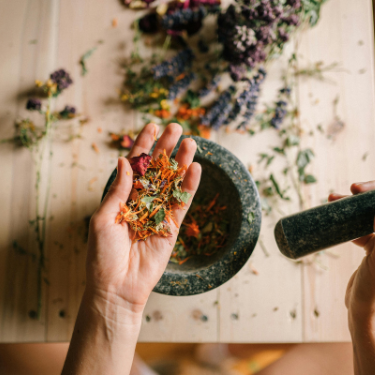
Ingredients:
3 tbsp coconut oil
2 tbsp baking soda
1 tbsp bentonite clay – I recommend this one, sourced and packaged in the USA
1 tsp dried peppermint or spearmint powder. To make the powder, dry the leaves of the mint plant and grind to a powder in a food processor or in a mortar and pestle
½ tsp neem powder – I like to use this organic one
Directions:
- Gently melt the coconut oil if solid.
- In a bowl, mix all of the dry ingredients.
- Add coconut oil and stir until you get a smooth paste.
- Dip your toothbrush in the paste and brush.
- Store in a small glass jar or plastic tub with a lid.
Why Stop At Toothpaste?
Just like toothpaste, many commercial mouthwashes contain harsh chemicals—alcohol, artificial dyes, and synthetic fragrances—that can irritate your gums and upset your mouth’s natural balance. Why rinse your mouth with something that could cause more harm than good?
Our ancestors knew better. Long before the aisles of drugstores were stocked with fancy bottles, people used simple, natural ingredients to freshen breath, kill germs, and strengthen their gums. Many of these are herbs and plants you might already have growing nearby.
Natural mouthwash works by gently cleansing your mouth without stripping away the good bacteria or causing irritation. Ingredients like witch hazel, peppermint, clove oil, and aloe vera combine to soothe gums, reduce inflammation, and fight bacteria naturally. And the refreshing taste makes it a pleasure to use daily.
Here’s a quick peek at the kind of ingredients you’ll find in this powerful, all-natural mouthwash recipe:
This simple mouthwash recipe is easy to make at home and will leave your mouth feeling clean, fresh, and healthy — without the chemicals.
Curious to see the full recipe and step-by-step directions?
Click HERE to unlock your 78% discount code for 250+ natural recipes and get 4 FREE gifts!
They All Work
These recipes have been used for centuries and they all work. They manage to combine the basic ingredients that define a toothpaste and will work for you.
The Soap That Might Be Growing In Your Backyard
How to Collect Clean, Drinkable Water from Plants (Video)
How To Use Toothpaste For Your Garden

